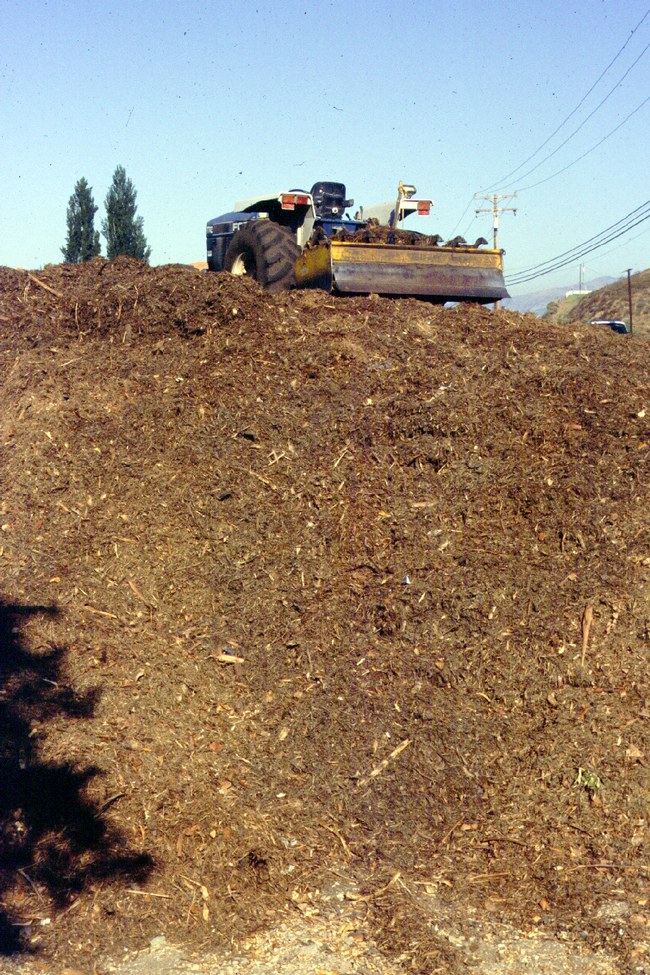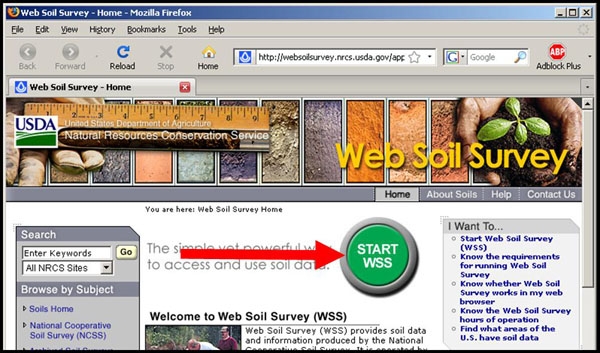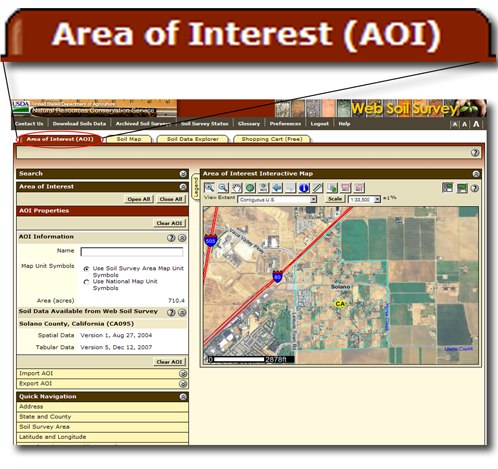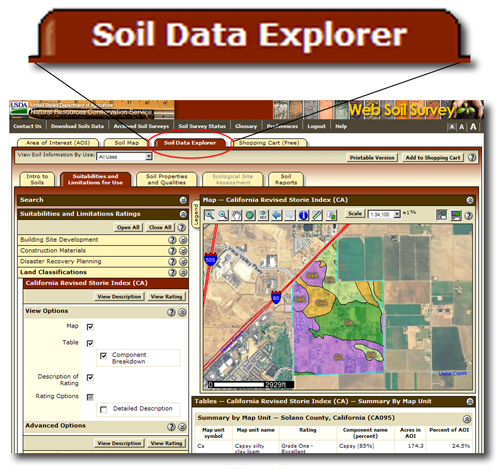- Author: Ben Faber
PULLMAN, Wash. Soil pathogen testing - critical to farming, but painstakingly slow and expensive - will soon be done accurately, quickly, inexpensively and onsite, thanks to research that Washington State University scientists plant pathologists are sharing.
As the name implies, these tests detect disease-causing pathogens in the soil that can severely devastate crops.
Until now, the tests have required large, expensive equipment or lab tests that take weeks.
The soil pathogen analysis process is based on polymerase chain reaction (PCR) tests that are very specific and sensitive and only possible in a laboratory.
The new methods, designed by WSU plant pathologists, are not only portable and fast, but utilize testing materials easily available to the public. A paper by the researchers lists all the equipment and materials required to construct the device, plus instructions on how to put it all together and conduct soil tests.
Responding to growers needs
"We've heard from many growers that the time it takes to obtain results from soil samples sent to a lab is too long," said Kiwamu Tanaka, assistant professor in WSU's Department of Plant Pathology. "The results come back too late to be helpful. But if they can get results on site, they could make informed decisions about treatments or management changes before they even plant their crop."
Some diseases from soil pathogens may not be visible until weeks after the crop has sprouted, Tanaka said. That could be too late to treat the disease or could force farmers to use more treatments.
Magnetic breakthrough
WSU graduate student Joseph DeShields, a first author on the paper, said it took about six months of work to get their device to work in the field. It relies on magnets to capture pathogens' DNA from the soil.
"It turns out, it's really hard to separate and purify genetic material from soil because soil contains so much material for PCR tests," said DeShields "So we were thrilled when we made that breakthrough."
Rachel Bomberger is a WSU plant diagnostician who helped with the concepts of the machine testing. She said she's impressed by what Tanaka and the team accomplished.
"We removed a huge stumbling block when it comes to soil testing," said Bomberger, one of the co-authors on the paper. "We found the missing piece that makes the testing systems work in the field without expensive lab equipment or testing materials."
Worldwide application
The system was tested on potato fields around eastern Washington, Tanaka said, but it will work on soil anywhere in the world.
"It's a really versatile method," he said. "You could use it for nationwide pathogen mapping or look at the distribution of pathogens around the country. We started small, but this could have huge implications for testing soil health and disease."
Tanaka said it was important for this discovery to be available in an open-access video journal.
"We're always concerned about helping every grower and the industry as a whole," Tanaka said. "We want everybody to look at this and use it, if they think they'll benefit from it."
###
The results were published in the Journal of Visualized Experiments, an open-access journal that includes a video showing how to assemble and used the system and a full list of materials needed to use their method.
This research is supported by the Northwest Potato Research Consortium and the Washington State Department of Agriculture - Specialty Crop Block Grant Program.
See the video here:
And the article here:
https://www.jove.com/pdf/56891/jove-protocol-56891-on-site-molecular-detection-soil-borne-phytopathogens-using-portable
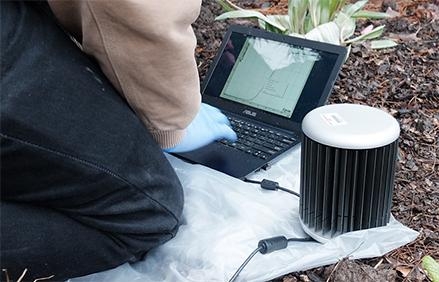
- Author: Ben Faber
A trunk "below grade", that is a buried trunk, is a problem for most trees. Willows and other riparian trees along water ways that are inundated regularly can adapt to a change in soil depth around their trunks. That's not true of most of our commercial tree species, and avocados and citrus are really susceptible to buried trunks/stems. they asphyxiate. This can be a very common problem at planting when a hole is too deep and the new tree settles in the loosen earth and gradually the stem is buried. Or, when the grower is doing the "right thing" and using an organic planting mix that gradually decomposes and the tree settles into the ground and the crown is covered by dirt. The tree then starts looking bad - leaves yellow. The canopy defoliates. All the while, the grower is putting on more water and more fertilizer and the tree looks worse and worse. Remove the soil from around the base, and voila, in a few months the tree is happy again. If the dirt isn't moved, the stressed tree is now susceptible to root rots, both Phytophthora and Armillaria. Those problems are a lot worse than just lack of air.
This suffocation is a common problem after flooding. Dirt from higher up moves into lower positions, gravity moving dirt can move a lot. It accumulates around the base of the tree. The grower is preoccupied with other things that occur with flooding and does nothing. A few months later, the trees start turning yellow especially when the weather warms up and they are more active and more water is being applied. Flooding can also spread disease organism from other areas that are contaminated. Oak root fungus is frequently spread in flooding waters, especially in the lower positions in little valleys.
Pulling that accumulated soil away from tree is important for tree health. It's something that needs to be done soon after the flooding incident, or any event that buries the tree trunk.
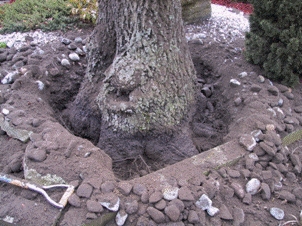
- Author: Ben Faber
So where is the highest potential for avocado root rot in California? It turns out that the Natural Resource Conservation Service has taken the soils maps that have been generated for use by growers, engineers, planners and others over the years and used the data to rate soils for their sensitivity to root rot conditions. In many cases the county-based maps have been updated with new information, as well. It is now much easier to see where root rot would be more likely. The two major soil characteristics of soil texture and depth and how they affect drainage are the major parameters used to assess the root rot hazard. The soil surveys for years were only available in printed form, and then became available online about 2005. Just recently the added feature of identifying “root rot” soils was created. Now at the touch of a button, maps of where these soils are found are available. It looks like all California counties can be viewed from an avocado root rot hazard, even though avocados may not be grown in that climate, like Humboldt, but who really knows what can grow there. Soils that are conducive to Phytophthora root rot for avocados, would also be conducive for root rot in other plants species, as well. So, this information is helpful for identifying where rhododendrons or other susceptible species might have problems, as well.
Of course, this is just the first step in assessing the potential for root rot. Irrigation management is critical for creating root rot conditions that can occur even in soils that are not conducive to the disease. So, a soil identified as having a higher potential for root rot does not mean you cannot plant an avocado in it. The key is water management and how the tree is planted and how that soil is managed.
So, go to the Web Soil Survey: https://websoilsurvey.sc.egov.usda.gov/App/HomePage.htm
Click on an Area of Interest (type in California and your county or even your address)
Once you have a map of your general area, use the tool at the top of the map to delineate the area you want to know more about ![]()
Then click on “Soil Map” tab and you will see the map polygons or soil units for that area
Then click on “Soil Data Explorer” tab to get “Suitabilities and Limitations Ratings” on the left side
Click on “Land Management” and there is “Avocado Root Rot Hazard”
Click on “View Rating” and the map will appear with colored units showing root rot hazard along with a chart showing the root rot hazard of the different soils in the map.
Wow. Watch out for those dark areas.
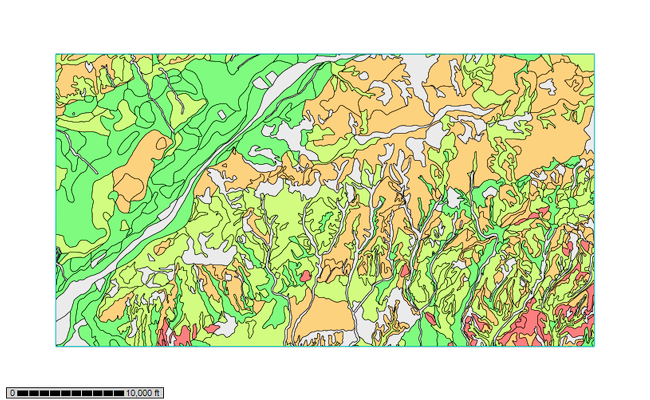
- Author: Ben Faber
A recent grower survey in Santa Barbara County asked a whole bunch of questions. One of which was had they had an evaluation of irrigation distribution uniformity. This is a free service that can significantly improve on-farm water use and most importantly improve plant health. Avocados that don't get the right amount of water at the right time are extremely susceptible to root rot. Proper irrigation is the first line of defense against root rot, good farming that results in good economic returns to the grower.
So, with a free DU available to growers, how many do you think took advantage of the service? Barely 50%!!!!!!!! This just does not make sense. In a land of little water and frequent examples of what can happen with no water ………………..and high priced water, what is going on?
The local Resource Conservation District has done many system evaluations, and most results find that improvements can be made in distribution uniformity. This is true in relatively new irrigation installations. It does not take long for problems to occur in even well designed and installed systems.
During the summer of 2007, the Casitas Municipal Water District (CMWD) contracted with the Irrigation Training and Research Center (ITRC) of California Polytechnic State University, San Luis Obispo, to conduct field evaluations of drip/micro systems. A team of two students conducted 35 field evaluations.
Distribution Uniformity (DU) – DU is a measure of the uniformity of water application to trees throughout an orchard, with DU = 1.0 being perfect. The measured orchard DUs in the Santa Barbara/Ventura area had an average DU of 0.66, while the California state average for drip/micro is 0.85.
In general, there were substantial opportunities to improve the distribution uniformity (DU) of the water to trees throughout an orchard. An improved DU will minimize over-irrigation in some areas, and reduce under-irrigation in others. Key recommendations that were provided included:
Install a pressure regulator at the head of every hose
With a regular microsprinkler, doubling the pressure causes about 40 percent more water to come out of the nozzle. Pressure regulators are added to have similar pressures throughout the orchard and thus reduce the risk of over-irrigating portions of the field. On many farms, the difference between the highest pressures was double or even triple the lowest pressures (40-70% more water). By adding the correct high-quality, pre-set pressure regulators with the correct flow rate rating, the farmer can get similar pressures to every nozzle and prevent over-irrigation.
For a pressure regulator (PR) to work, more pressure must enter the PR than what the PR is rated for. For example, to use a 25 psi PR, you need at least 27 psi into the PR. All a PR does is reduce pressure; it cannot add pressure.
Another problem on hillsides is that some pipes have as much as 100 psi before the PR. A PR can effectively reduce the pressure down to 50%. What is recommended in these fields is to reduce the pressure in the pipe by adding an in-line valve halfway down the hill and throttling it down to a reasonable pressure.
Completely replace all microsprinkers with pressure compensating microsprinklers
Pressure compensating microsprinklers have an internal flexible diaphragm that reduces a pathway as the pressure increases. These allow similar amounts of water to get the trees even if the hoses do not have the same pressures. Whenever the pressure is doubled, 10 percent more water will come out of these emitters, compared to 40 percent more water with a regular microsprinkler. Having pressure compensating emitters can drastically improve the DU in virtually every avocado orchard because most irrigation systems were not properly designed for microsprinkler systems, or because the farmer has altered the original design by adding different-sized nozzles.
Reduce plugging problems
Major plugging problems are found in all orchards that did not have good filtration, even those that get district water. There were also some “within-system” causes of plugging. Almost all plugging is from simple dirt or rust, as opposed to bacteria or algae. Recommendations are as follows:
- Always have a filter at the head of the system. The required mesh size depends on the microsprinkler flow rate, but 120 mesh is a starting point.
- Remove hose screen washers that are found at the head of hoses, and replace them with regular washers (after installing a filter at the head of the system). The hose screen washers often plug up and cause the hoses to have unequal inlet pressures.
- Be sure to thoroughly flush hoses after any hose breaks.
- Double check the type of fertilizer that is being injected, especially any “organic fertilizers”. Some of these can plug emitters. In any case, inject the fertilizers upstream of the filters. If the filter plugs up, it is better to have discovered the problem early.
- Clean the filters frequently. Install pressure gauges upstream and downstream. When the pressure differential (as compared to a clean screen) increases by 3-5 psi, it's time to clean the screen.
In some orchards, there is a big plugging problem caused by insects crawling into emitters after the water is shut off. Many of the new microsprinkler designs utilize a self-closing mechanism to prevent insects from coming into the nozzle.
We have gotten a reprieve with the rains and refilled reservoirs, but it is ever more important to make sure our irrigation systems are doing what they are supposed to be doing. Call your local Resource Conservation District and get information about a system evaluation. Contact numbers can be found at: http://www.carcd.org/rcd_directory0.aspx
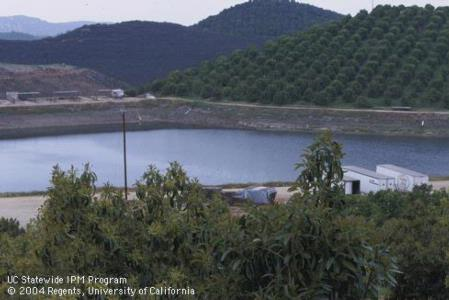
- Author: Ben Faber
Biological control of Phytophthora cinnamomi in avocadothrough the use of mulches was identified by an Australian grower and later described as the "Ashburner Method" by Broadbent and Baker. The technique uses large amounts of organic matter as a mulch along with a source of calcium. Control of avocado root rot in the Ashburner method was attributed to the presence of Pseudomonas bacteria and Actinomycetes. Multiple antagonists are more likely the cause of biological control, since no single organism has been found to be consistently associated with soils suppressive to P. cinnamomi.
The use of organic mulches has multiple effects, such as altered soil nutrient and water status and improved physical structure. Any improvements in plant status resulting from improvements in the growing environment can improve plant health. The effect of organic amendments on soil physical and chemical properties can vary considerably depending on soil texture and the environment. One of the most consistent effects of organic amendments is an increase in biological activity. Increases in organic substrate lead to increased fungal and bacterial populations. In numerous cases, this increase in biomass has been associated with disease suppression. This biological control can be ascribed to several mechanisms: competition, antibiosis, parasitism, predation and induced resistance in the plant.
The microbial biomass is responsible for release of enzyme products and polysaccharides in soils. The microbially-produced enzymes cellulase and glucanase have been demonstrated to have a significant effect on Phytophthora populations. This mechanism of antibiosis is possible because the microbes are releasing these enzymes to solubilize organic matter. Unlike other fungi, Phytophthora have cell walls that are comprised of cellulose and in the process of decomposing organic matter with enzymes, an environment is created that is also hostile to the pathogen.
In order to see if there might be potential differences in organic materials being better at combating avocado root rot, a little field trial was established with 23 different types of materials (see types on Graphs 1 and 2). The mulch materials were obtained from nearby hedges and chipped or obtained from commercial sources of mulch. Some of these materials would be difficult to get in large amounts, such as manuka (Leptospermum scoparium), but others are commercially available chipped greenwaste. The materials were then spread on the ground to a depth of five inches, in separate plots that were 36 X 36 inch squares. Decomposition was measured over a two year period and then cellulase was measured in the mulch, at the soil / mulch interface and at a two inch depth in the soil at the end of 2 years.
Since cellulase production is part of the decomposition process, the rate of decomposition should be a partial indicator of the amount of cellulase present. Graph 1 shows the depths of various materials at the site after one and two years of decomposition. After a mulch application there is generally settling due to rainfall-caused compaction, but much of the decline by the second year is due exclusively to decomposition. The more recalcitrant materials, such as bark, wood chips and sawdust have barely lost half their depth after two years, while others such as shredded eucalyptus, manuka, avocado and willow are less than 20% of their initial depth. Much of the shredded/chipped material, such as eucalyptus had a significant fraction of leaves in the mulch. The wool disappeared a little after one year. The greenwaste + chicken manure compost is nearly the same depth as the wood chips, since it is a material that had gone through a decomposition process prior to its application and much of the easily digestible materials had already been decomposed.
The rate of decomposition has some bearing on the rate of cellulase production (Graph 2). Eucalyptus and manuka had the two greatest rates of decomposition and show the highest levels of cellulase production. The cellulase levels were consistent with all the different mulch materials. Using decomposition rate alone is not a complete indicator of cellulase production since, poplar, willow and avocado had high rates of decomposition, but their cellulase rates were half those of manuka and eucalyptus
It is clear that the cellulase effect is limited to the layer of mulch and not to depth within the soil. There is some effect at the soil surface, but at 5 cm. cellulase activity drops to background levels (Graph 2). There is earthworm activity at the test sites and one idea was that earthworm incorporation of organic matter would move the cellulase production into the soil. Maybe with further time this would occur. As it is, when mulches are applied to avocado, the roots tend to proliferate in the mulch, out of the soil where the cellulase activity is the least.
Something to keep in mind is that we do not know what levels of cellulase are necessary to control the root rot fungus. It may be that levels seen with pine bark are more than adequate. Also we have measured cellulase production at only one time in a two-year period and it is quite likely that this is not the best snapshot of what is happening before and after. A further reminder is that cellulase is only one of the many by-products associated with decomposition and many of the antagonistic properties that are associated with the microbial biomass are not being measured in this trial. Having developed this screening procedure what needs to be done next is to take high, medium and low cellulase producing mulches and challenge the fungus to verify that this is a good way to evaluate mulches.
